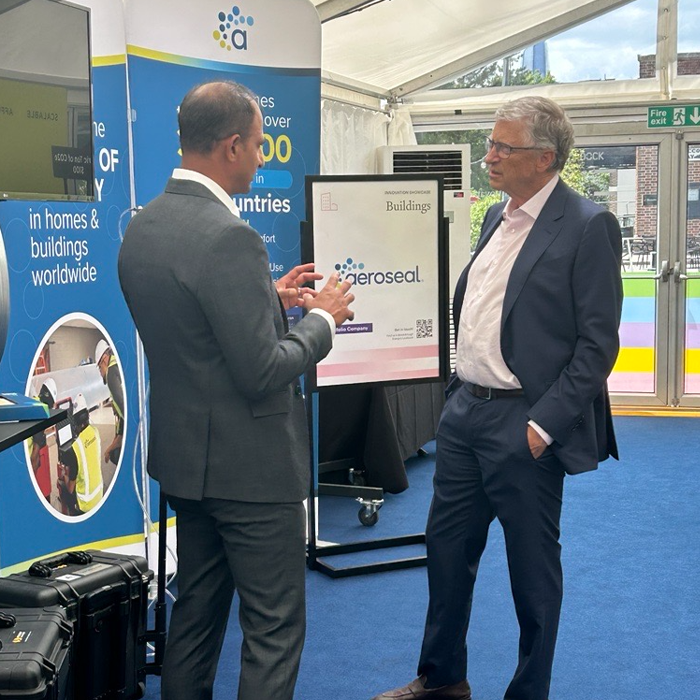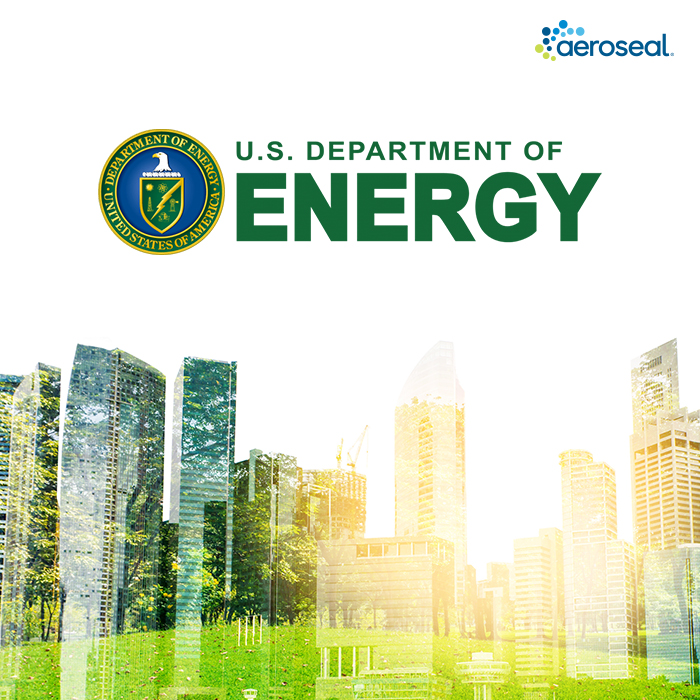Written by Maggie McCarey
Head of Policy & Market Development, Aeroseal
Maggie’s Policy Corner | Exploring Building Decarbonization and Incentives

As former energy efficiency director at the Massachusetts Department of Energy Resources (DOER) and current policy lead at Aeroseal, you might say I’m passionate about decarbonization. My decision to join the Aeroseal team in 2023 was driven by how effectively Aeroseal Duct and Aeroseal Envelope solutions lower carbon footprints of commercial and residential buildings.
Aeroseal finds itself at the intersection of many global efforts and trends related to combatting climate change. Whether it’s improving building energy efficiency and indoor health, reducing dependence on fossil fuels, lowering greenhouse gas (GHG) emissions, supporting equitable electrification initiatives or contributing to Net Zero goals, Aeroseal technologies have the potential to act as a force multiplier in all these critically important efforts.
Rulemaking and building codes (i.e., policy) play an important role in the pursuit of these goals, both in setting minimum efficiency standards and providing opportunities to incentivize building decarbonization. This was my primary focus during my time with the Massachusetts DOER and is now directly applicable to addressing Aeroseal customer priorities. But they’ve also told us how challenging it can be to stay current on policy changes and capitalize on incentive opportunities.
This was the motivation for starting a dedicated Policy Corner blog series, which will be focused on providing clear and concise policy information and incentive guidance to our customers. I’m excited to kick off this Policy Corner blog by providing an overview of the overarching trends, topics and opportunities that we’re focusing on at Aeroseal.
IRA drives electrification in residential HVAC
The transition to heat pump technology has been identified as a key pillar of building decarbonization efforts. Research has shown that the pairing of electrification (i.e. heat pumps) with weatherization measures — such as Aeroseal Duct sealing — is essential for maximizing heat pump performance and cost-effectiveness. Leaky ductwork and building envelopes can compound airflow and setpoint challenges with heat pumps, requiring back-up electric heat to meet desired comfort levels.
The Inflation Reduction Act (IRA) is making significant funds available for home energy rebates programs to support these electrification and weatherization upgrades, focused especially on low- and moderate-income residents. Following final Department of Energy (DOE) guidance at the end of 2023, states are now able to submit applications to the DOE. Expect these rebates to start being made available to homeowners and multi-family building owners later this year and into 2025.
Outside of the IRA’s home energy rebates, it’s important to also remember that a tax credit of up to$1,200 is already available through 25C; and many states have significant funding already available to help homeowners implement energy efficiency upgrades. Aeroseal’s policy team is dedicated to helping stakeholders access these resources and unlock rebates as they become available. We recently released a new webpage that provides details on rebates available for Aeroseal duct sealing.
Focus on multi-family and affordable housing
Improving ventilation systems in multi-family dwellings has far-reaching impacts on energy efficiency and decarbonization — and ultimately, occupant comfort and well-being. The benefits of Aeroseal solutions are never more apparent than when we can seal existing ductwork in aging buildings to:
- Reduce energy use
- Lower electricity costs, and prepare buildings for electrification
- Improve indoor air quality (IAQ) and building performance
Currently, Aeroseal is upgrading aging ventilation systems in cities such as New York City, Boston and Chicago. My goal is to find new and streamlined ways to implement these solutions into affordable housing programs and income-eligible weatherization opportunities.
Helping commercial buildings owners meet local ordinances
Aeroseal has developed numerous strategic partnerships with energy service companies and building owners that are deploying our duct sealing technology to reliably reduce energy and GHG emissions. New local ordinances — such as Local Law 97 in New York and the Building Energy Reporting Disclosure Ordinance (BERDO) in Boston — are requiring large building owners to invest in upgrades to reduce energy intensity and GHG emissions.
Aeroseal has significant expertise in reducing energy consumption (and costs) in these energy-intensive facilities. Not only does this service help them to make significant steps along their decarbonization journeys, but it also provides a turnkey, cost-effective solution for avoiding penalties associated with these regulatory requirements.
Actively supporting the passive house movement
Adoption of passive house design is growing rapidly, especially in the multi-family and affordable housing sectors. Meeting the ventilation and compartmentalization standards are among the most challenging components of passive house certification. Aeroseal technologies have consistently helped design teams and developers to meet these standards, delivering the verifiable metrics needed to unlock significant incentives while providing stakeholders a path to achieving their 2050 decarbonization goals. To top it off, passive houses provide comfortable, safe and affordable living environments for residents.
ENERGY STAR® 3.2 raises the standard for builders
Other policy shifts that we’re keeping an eye on this year are the changes coming to ENERGY STAR and the 45L tax credit. As of January 2025, accessing the 45L tax credit will require certification to the ENERGY STAR 3.2 standard. Aeroseal will be working to help builders chart the most cost-effective course for meeting these new requirements and achieve $2,500 to $5,000 in tax credits per home. Proper duct and envelope sealing will be more important than ever.
Coming up next, Maggie’s Policy Corner will take a deeper dive into electrification and how to leverage Aeroseal Duct technologies to balance the heat pump equation.














